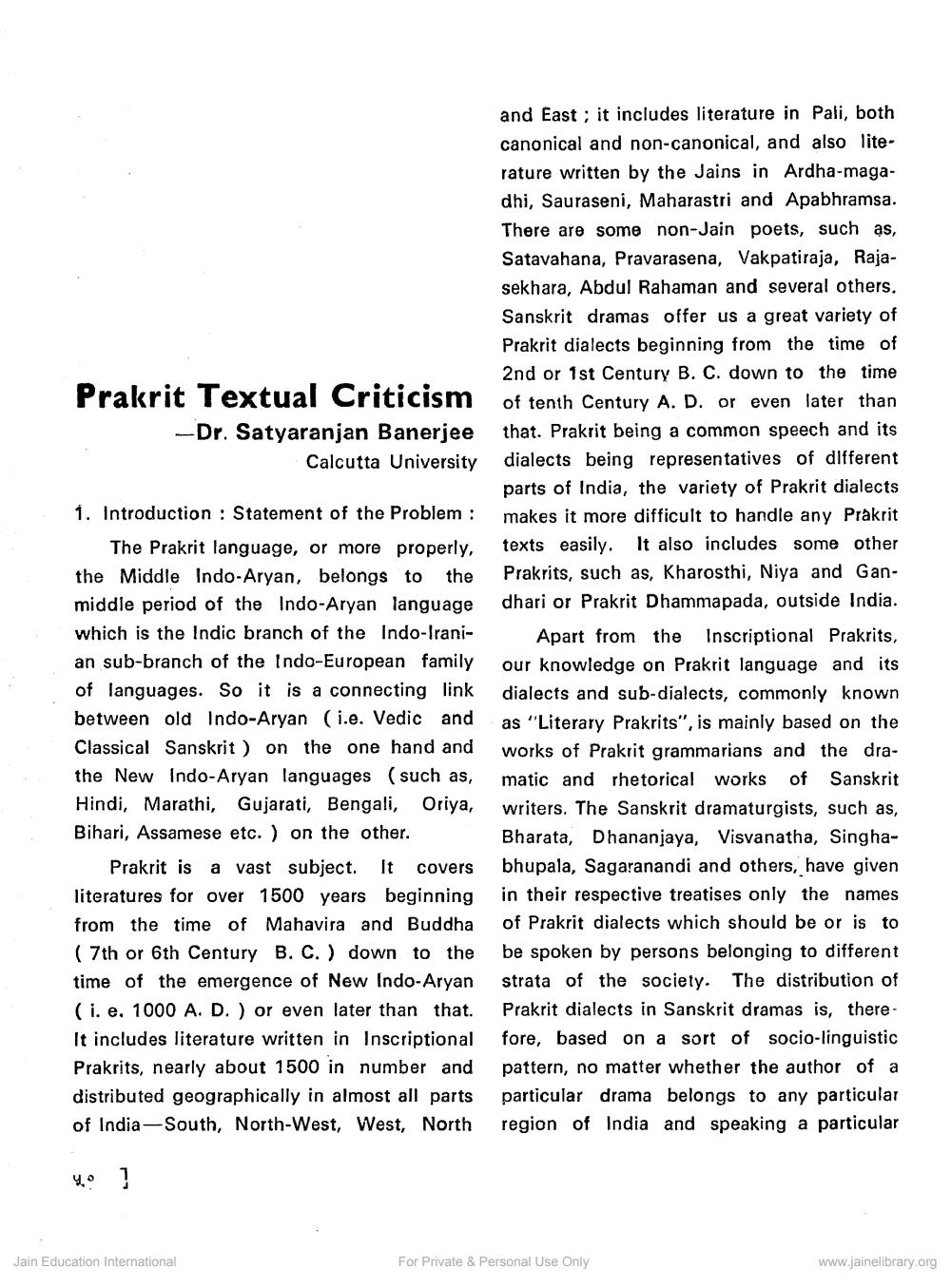Book Title: Prakrit Textual Criticism Author(s): Satyaranjan Banerjee Publisher: Z_Bhanvarlal_Nahta_Abhinandan_Granth_012041.pdf View full book textPage 1
________________ Prakrit Textual Criticism --Dr. Satyaranjan Banerjee Calcutta University 1. Introduction : Statement of the Problem: The Prakrit language, or more properly, the Middle Indo-Aryan, belongs to the middle period of the Indo-Aryan language which is the Indic branch of the Indo-Iranian sub-branch of the Indo-European family of languages. So it is a connecting link between old Indo-Aryan (i.e. Vedic and Classical Sanskrit ) on the one hand and the New Indo-Aryan languages (such as, Hindi, Marathi, Gujarati, Bengali, Oriya, Bihari, Assamese etc.) on the other. Prakrit is a vast subject. It covers literatures for over 1500 years beginning from the time of Mahavira and Buddha ( 7th or 6th Century B. C. ) down to the time of the emergence of New Indo-Aryan (i. e. 1000 A. D.) or even later than that. It includes literature written in Inscriptional Prakrits, nearly about 1500 in number and distributed geographically in almost all parts of India - South, North-West, West, North and East; it includes literature in Pali, both canonical and non-canonical, and also literature written by the Jains in Ardha-magadhi, Sauraseni, Maharastri and Apabhramsa. There are some non-Jain poets, such as, Satavahana, Pravarasena, Vakpatiraja, Rajasekhara, Abdul Rahaman and several others. Sanskrit dramas offer us a great variety of Prakrit dialects beginning from the time of 2nd or 1st Century B. C. down to the time of tenth Century A. D. or even later than that. Prakrit being a common speech and its dialects being representatives of different parts of India, the variety of Prakrit dialects makes it more difficult to handle any Prakrit texts easily. It also includes some other Prakrits, such as, Kharosthi, Niya and Gandhari or Prakrit Dhammapada, outside India. Apart from the Inscriptional Prakrits, our knowledge on Prakrit language and its dialects and sub-dialects, commonly known as "Literary Prakrits", is mainly based on the works of Prakrit grammarians and the dramatic and rhetorical works of Sanskrit writers. The Sanskrit dramaturgists, such as, Bharata, Dhananjaya, Visvanatha, Singhabhupala, Sagaranandi and others, have given in their respective treatises only the names of Prakrit dialects which should be or is to be spoken by persons belonging to different strata of the society. The distribution of Prakrit dialects in Sanskrit dramas is, therefore, based on a sort of socio-linguistic pattern, no matter whether the author of a particular drama belongs to any particular region of India and speaking a particular Jain Education International For Private & Personal Use Only www.jainelibrary.orgPage Navigation
1 2 3 4 5 6 7 8 9
